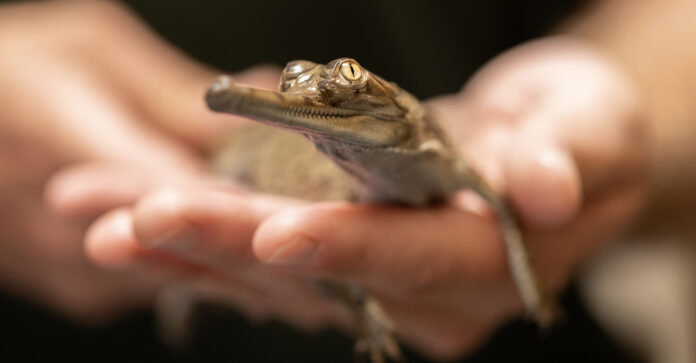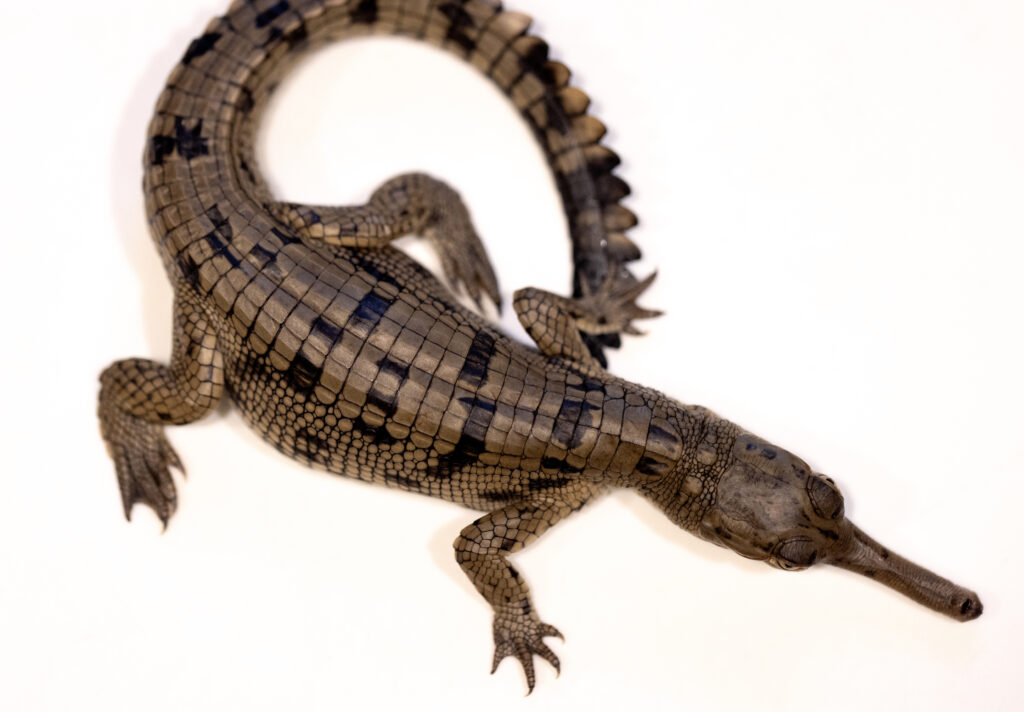The Fort Worth Zoo celebrated what zoo officials called “a monumental moment in conservation” today (Aug. 31) with the historic hatchings of four gharial crocodiles.
The Fort Worth Zoo is the only institution in the United States to have produced multiple offspring of this species, the zoo said in a news release. To date, the release said, only one other institution has produced a single hatchling (in 2016.)
The hatchings are considered an extraordinary conservation success because gharials are listed as critically endangered by the International Union for the Conservation of Nature (IUCN) and low fertility among eggs is a common occurrence. Adding to the significance: the offspring were produced from two separate clutches from two different females.
“The team is incredibly proud and excited to finally have gharial hatchlings,” said Vicky Poole, the zoo’s associate curator of ectotherms. “Staff closely watched the developing eggs for the past few months and with each sign of life, our superstitious anticipation grew, just like a baseball pitcher throwing a no-hitter. We were all pretty emotional with each hatching.”
The hatchlings will introduce a new bloodline and diversify the gene pool among gharials in professional care, the zoo said. Currently, there are just 35 gharials living among nine institutions in North America.
With conservation at the forefront of the Fort Worth Zoo’s mission, the zoo will continue to devote time and resources to the animals to ensure their species thrives, the news release said. “With this scientific breakthrough, we will be able to contribute our research and expertise to other zoos and institutions across the world in an effort to bolster the population of this critically endangered species,” said Michael Fouraker, the zoo’s executive director.
Zoo staff put forth a decades-long effort to successfully reproduce this species and grow the population, the zoo said. The gharial habitat in the Zoo’s herpetarium, the Museum of Living Art, was specifically crafted in 2010 with conservation as priority. Some of the efforts made to ensure optimal breeding success include water temperature regulation, angled waterfront to provide easy access to both wet and dry areas, with heat coils in the sand to ensure the sand stays hot enough for the females to lay eggs.
For now, the zoo said, the hatchlings will live behind the scenes so that staff can closely monitor their growth and development. Male gharials, which are slightly larger than females, can grow to 16 feet and weigh nearly 1,500 pounds.






